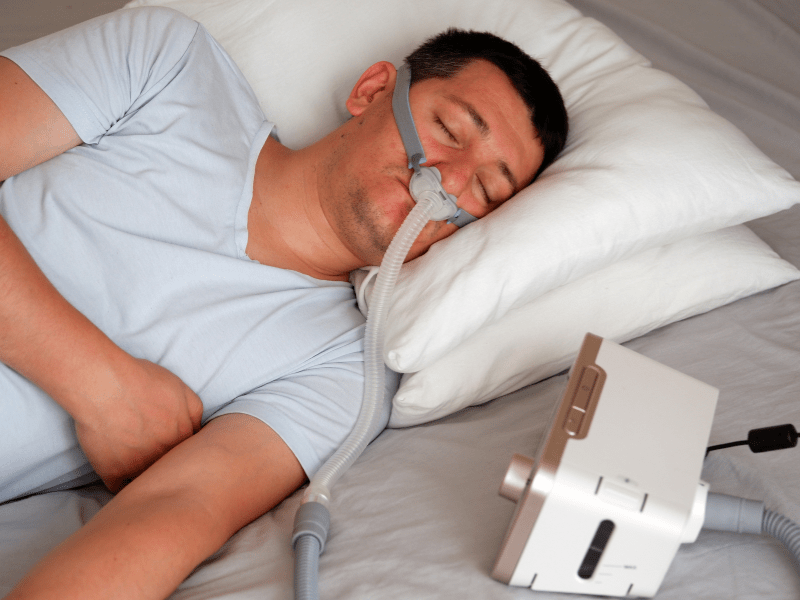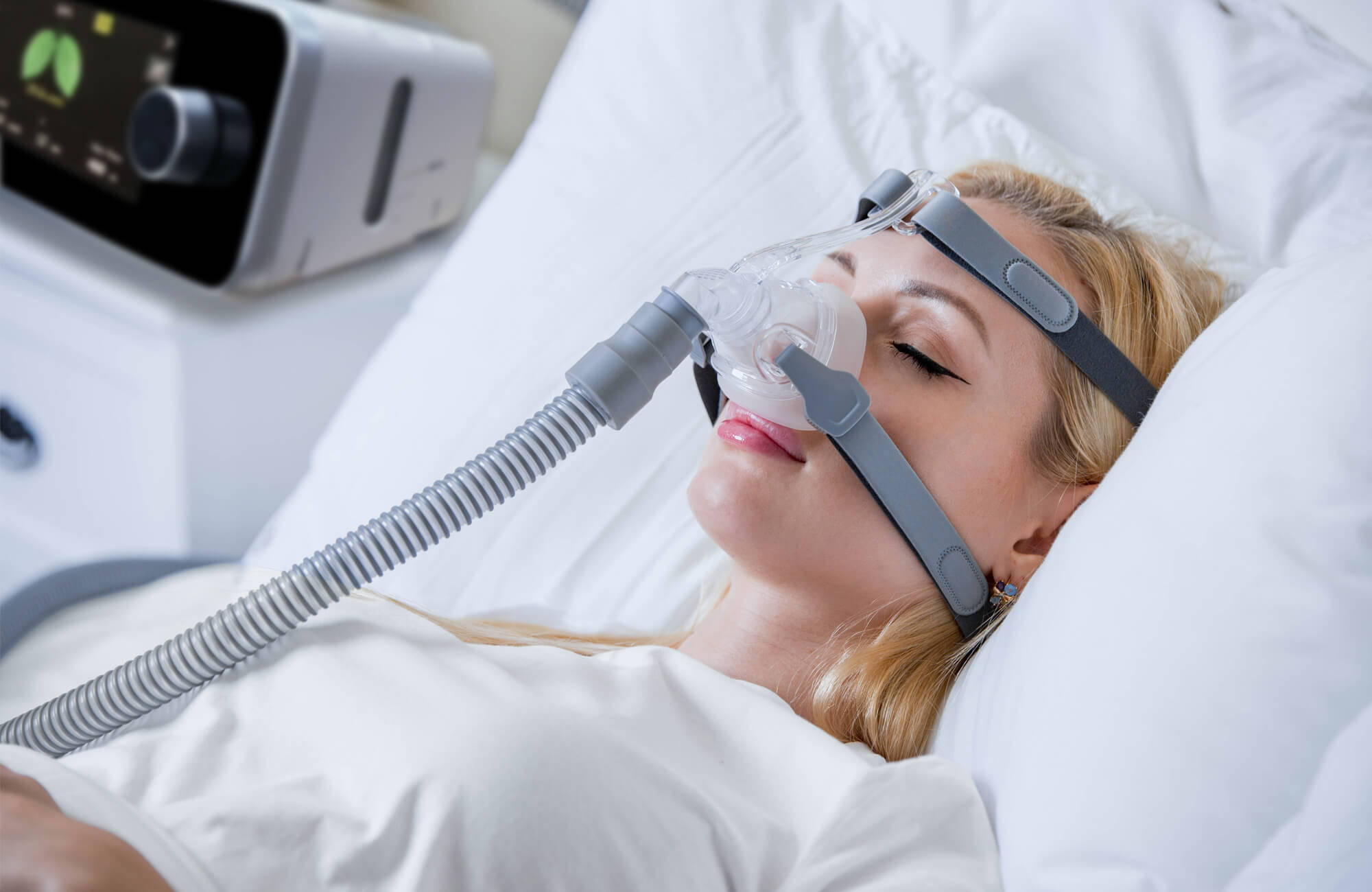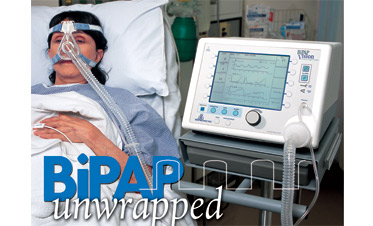BiPAP Rental: Hassle-Free Solutions for Temporary Needs
BiPAP Rental: Hassle-Free Solutions for Temporary Needs
Blog Article
Bipap vs. CPAP: Which Is the very best for Your Sleep Problem?
When navigating the complexities of sleep problems, the selection in between BiPAP and CPAP treatment is an essential factor to consider. Each modality uses distinct advantages tailored to particular problems, yet the decision depends upon individual client demands and comfort levels. While CPAP provides a consistent air flow suitable for obstructive rest apnea, BiPAP's dual stress setups may boost convenience for those with even more complex respiratory issues. Recognizing these differences can significantly influence therapy efficiency, leaving one to contemplate which choice truly aligns with their health requirements and way of living.
Comprehending Rest Disorders
Rest problems encompass a series of conditions that disrupt regular rest patterns, influencing both the quality and period of rest. These disorders can materialize in different forms, consisting of sleeplessness, rest apnea, narcolepsy, uneasy leg syndrome, and parasomnias. Each condition offers special obstacles, commonly resulting in significant daytime exhaustion, cognitive problems, and psychological disturbances.
Sleep problems is defined by trouble dropping or staying asleep, while sleep apnea includes duplicated disruptions in breathing during rest, commonly bring about fragmented rest. Narcolepsy, on the other hand, is noted by too much daytime drowsiness and sudden rest assaults. Restless leg syndrome creates uneasy experiences in the legs, triggering an irrepressible impulse to move them, which can likewise impede the capacity to drop off to sleep.
The effect of rest disorders expands beyond private health and wellness, affecting general efficiency, connections, and quality of life. Recognizing the particular nature of each problem is crucial for effective medical diagnosis and therapy. As sleep health and wellness comes to be progressively acknowledged as an important element of total health, addressing these problems is important for boosting both rest quality and day-to-day performance.
Just How CPAP Functions
Continual Positive Respiratory Tract Stress (CPAP) treatment is often used as a primary treatment for obstructive sleep apnea (OSA) The mechanism of CPAP entails making use of a maker that provides a constant stream of air with a mask put on throughout sleep. This air movement preserves favorable pressure in the respiratory tract, preventing the collapse or obstruction of the throat that can occur throughout rest.
When a patient inhales, the CPAP machine supplies a continual circulation of air, ensuring that the airway continues to be open - BiPAP Rental. This not just reduces the symptoms of OSA, such as snoring and disrupted rest patterns, however additionally reduces the involved health and wellness threats, consisting of cardiovascular problems and daytime tiredness
The stress settings on a CPAP machine can be customized to fulfill specific patient demands, often figured out with a rest research. Overall, CPAP therapy has been revealed to significantly improve the high quality of sleep and total wellness for individuals experiencing from obstructive sleep apnea.
How BiPAP Functions
BiPAP, or Bilevel Favorable Respiratory Tract Pressure, is a specialized type of non-invasive air flow that is specifically useful for individuals with conditions such as intricate sleep apnea or breathing problems. Unlike CPAP, which supplies a continual stream of air at a solitary pressure, BiPAP supplies 2 unique pressure setups: a greater inspiratory pressure for breathing and a reduced expiratory stress for exhalation. This dual-pressure technique permits for much easier breathing, lowering the initiative needed throughout exhalation.
The tool runs via a mask fitted over the nose these details or mouth, connected to a maker that produces air stress. When the individual breathes in, the machine provides the greater pressure to assist with air flow, making certain that the airway stays open. Upon exhalation, the device instantly reduces the pressure, making it more comfortable for the individual to breathe out.

Trick Distinctions Between BiPAP and CPAP

On the other hand, BiPAP (Bilevel Positive Respiratory tract Stress) supplies 2 various stress setups: one for inhalation and a reduced one for exhalation. This dual stress system enables even more comfy breathing, specifically for clients who fight with breathing out against a continual stress. BiPAP is frequently suggested for people with complex sleep apnea, persistent obstructive lung disease (COPD), or those who call for extra assistance throughout rest.
In addition, the intricacy of BiPAP devices normally results in a higher expense and needs more cautious titration than CPAP. BiPAP Rental. Comprehending these essential distinctions can aid in identifying which tool may be much more suitable for certain rest conditions, establishing the foundation for educated therapy decisions
Picking the Right Treatment
The choice in between BiPAP and CPAP treatment mostly hinges on the particular qualities of the sleep condition, the person's overall wellness, and their comfort with the gadget. CPAP, which provides a continual stream of air, is commonly prescribed for obstructive rest apnea (OSA)
Conversely, BiPAP gives two levels of pressure: one for breathing and a lower one for exhalation. This twin stress system is advantageous for people with intricate sleep apnea or those who experience trouble breathing out against a constant stress. In addition, BiPAP is usually advised for individuals with breathing problems, such as chronic obstructive lung condition (COPD), where varying pressure settings can enhance convenience and conformity.
Eventually, a detailed assessment by a sleep expert, including a rest research study, can aid identify which treatment straightens finest with the patient's needs. Elements such as convenience, simplicity of usage, and details clinical problems need to likewise be thought about to maximize view it therapy outcomes.
Conclusion
In recap, both BiPAP and CPAP offer distinct objectives in the management of rest problems. CPAP works for obstructive rest apnea with consistent air movement, while BiPAP provides double stress settings that improve comfort for those with complicated sleep apnea or breathing issues. The option between these therapies need to be guided by private demands and problems, necessitating an extensive evaluation by a sleep expert to ensure ideal treatment end results and boosted quality of sleep.

In general, CPAP therapy has been shown to dramatically enhance the top quality of sleep and general health and wellness for individuals experiencing from obstructive rest apnea.
BiPAP is often suggested for patients with complicated sleep apnea, chronic obstructive pulmonary condition (COPD), or those who need added assistance during rest.
CPAP is effective for obstructive sleep apnea via constant air movement, while BiPAP offers double stress setups that boost convenience for those with intricate sleep apnea or respiratory system problems.
Report this page